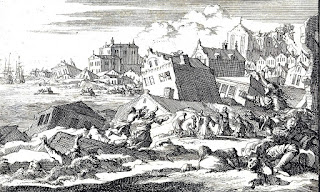 |
| Buy Here |
Now in Audio
Since it’s
June, and the traditional wedding month, if we ever get through this pandemic, I thought I’d share an excerpt from Pillars of
Avalon, the wedding vows between David & Sara. Humourous to say the least. This is a story of love, struggle and passion.
A good read for YA & Adults.
David and
Sara Kirke were married in London 1630. It was not long after they settled in
Newfoundland, now Newfoundland/Labrador. Their story is filled with adventure,
very well researched. We found as much data on them from the limited resources
as possible.
~*~*~*~
Spangler took a deep breath and
said, “Dearly beloved friends, we are gathered together here in the sight of
God...”
David’s chest deflated and his
gut heaved. The very raising of her chin emasculated him, casting him into the
hoary pit of impotence. She did that often and he wondered if women were born
this way or if they learned it from their mothers.
Lord above, but he pitied Sara’s
father. Being married to a bloody harpy like Mother Andrews would be his
undoing.
“...an honourable estate instituted
by God in paradise, in the time of man’s innocence...” Spangler said in a
singsong manner.
David wanted to scoff. Man’s
innocence, my arse. Women’s cunning
and their wicked ways unmanned men. In his weakness David would soon lustily
bed Eve as Adam had taken the apple and eaten thereof.
“…of Saint Paul to be honourable
among all men, and therefore is not to be enterprised, nor taken in hand
unadvisedly, lightly, or wantonly, to satisfy men’s carnal lusts and appetites,
like brute beasts…”
Of course, he was a brute and a
beast. He hungered for Twig, her softness, how her eyes brightened when he
walked into a room. Their bundling showed she had the capacity to love him. She
was open to do all things imaginable behind the bed curtains. He intended to try
the sports expressed in chapbooks. All of them.
“…but reverently, discretely,
advisedly, soberly, and in the fear of God.”
David did not like those words. A
woman must have whispered in the ear of whoever wrote that part of the Book of
Common Prayer. Why should a man fear God when he created the physical body to
enjoy the act of procreation?
He scoffed in derision and Sara
gave him a look. The minister paused in his reading. They turned to him with
question, their regard on the verge of horror. Embarrassed, David’s neck
heated. His ears buzzed and his knees wobbled.
All he could do was shrug.
Spangler cleared his throat.
“Duly considering the causes for which matrimony was ordained. One cause was
the procreation of children, to be brought up in fear and nurture of the Lord,
and praise of God…”
Why should he raise his sons to
fear God? When a man struck out on his road, to do what his heart most desired,
if it was honourable, then there should be no fear. He sliced a glance at Sara.
So far, she hadn’t been overly reverent or spouted homilies. She did not judge
with the Good Book in her hand. He nodded. They would do well together.
“Secondly,” the minister
continued, his voice falling into the monotone of words often said.
David frowned. Would this never
end?
“It is ordained for a remedy
against sin, and to avoid fornication that such persons as be married, might
live chastely in matrimony and keep themselves undefiled members of Christ’s
body.”
Those words should be stricken
from the ceremony, David reflected sagely. The only reason a man would
fornicate outside the marriage bed was a cold and stiff wife, which he would
not have. He’d sell Sara in a public auction if she was thusly, and he snorted.
Spangler tripped over his words
and Sara faced him, her lips curled in a frown. David reared back, as if he
would soon be pummelled by the two of them. Nervous coughs came from the
congregation. He tried to look innocent of any wrongdoing.
After several tense moments where
he burst into a mighty sweat, Spangler flipped through the pages of his book,
then said, “I require and charge you, as you will anywhere at the dread full
day of judgement, when the secrets of all hearts shall be disclosed,” he put
his hand to his mouth and coughed, “that if either of you do know any
impediment why ye may not be lawfully joined together in matrimony, that ye
confess it.” He gazed at David.
Sara turned to him.
He wanted to shout, “What have I
done?”
Still looking at David, Spangler
said, “For be ye well assured that so many as be coupled together; otherwise
then God would doeth allow you are
not joined of God. Neither is your matrimony lawful.”
Annoyance turned to anger. The
man was a damned rogue who pointed an improper finger at him.
“David Kirke, wilt thou have this
woman to thy wedded wife, to live together after God’s ordinance in the holy
estate of matrimony? Wilt thou love her, comfort her, honour and keep her…”
Surely he would if she weren’t a
crone and enjoyed tussling upon the counterpane.
Spangler cleared his throat and
Sara gave him a murderous regard.
David could not fathom their
discontent. “I will.”
“Sara Andrews, wilt thou have
this man to thy wedded husband, to live together after God’s ordinance, in the
holy estate of matrimony? Will thou obey him and serve him…”
She would certainly obey him. If
not, David knew he had the full right to beat her into proper submission. He
gazed at her. She was so pretty with bright eyes and kissable lips. He could
never lay a hand upon her, no matter how much she vexed him.
“I will,” Sara said.
~*~*~
The vows were taken from the Book of Common Prayer, 1549 edition





























